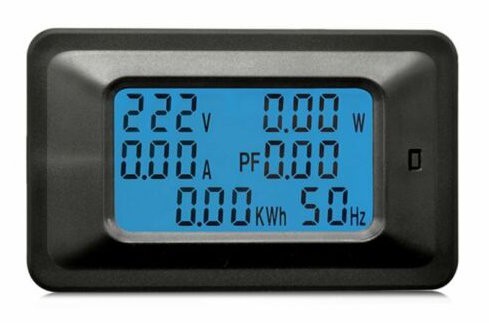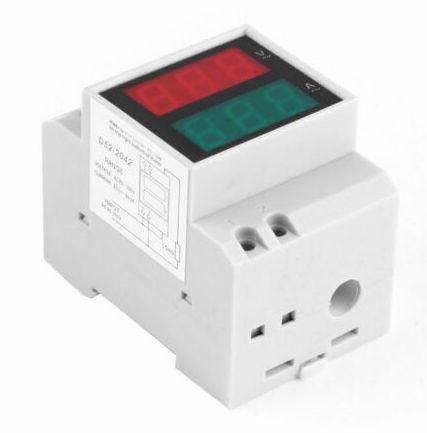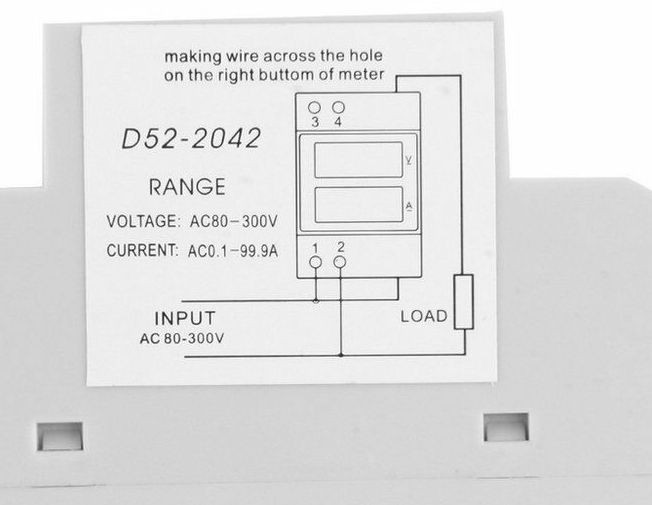-
I should have asked eBay first
04/23/2019 at 11:08 • 0 commentsThe last logs address some issues, such as the "over-current protection" (OCP ?), but here I address another issue : I need output meters
As I age, I get lazier and I finally made the effort to look up on eBay. I was not disappointed. OF COURSE there are countless panel meters, LED, LCD, galva... Some are even combined : Volts and Ampères on a dual display, Watts and Watt-Hours on quad display and even frequency and power factor for the latest trending gadget.
![]()
I don't need all those bells and whistles (at least for this particular project, wink) and I'll add a combined V+A meter on the DIN rail for the convenience :
![]()
However the combined meter can't be connected at the output of the variac because it is rated for 80Vac input, when the variac can go down to 0V.
![]()
One main application/use for the "mains box" is to slowly ramp up the variac, starting from zero, while examining all the parameters of the Design Under Test, so I need to go below 80V. However the combined meters have a common wiring and steal the operating power from the current it measures.
The solution is of course to use classic, non-combined, meters, so they can be power by the isolation transformer, but can measure the voltage and current after the variac.
I found a classic module, based on the venerable ICL chip, that can measure down to 0Vac and uses an external power supply, though many questions remain. For example, how are the supply and input isolated, how many digits are effective and why can't I find a similar device to measure current ?
-
How can I trip the current at arbitrary, adjustable values ?
04/22/2019 at 20:13 • 7 commentsThe mains input has a standard 2A circuit breaker, which should be able to sustain inrush current from the 400VA isolation transformer. Let's say it is a last resort for dramatic failure and also serves as a simple input on/off switch.
But 500W is a very dangerous power and a lot of damage can occur before the 2A protector trips. I want an electronic circuit breaker that reacts fast, at a current I dial at will (under 1A). Even at 10mA so I can deal with small PSU modules that can handle 1W.
This is quite out of the realm of the "electric devices and supplies" that equip your house and that you can readily buy at a nearby store. I'd love to use existing products for 1) speed of implementation 2) compliance with safety rules 3) cost (I don't think I can make cheaper than others).
There are various types of current sensors :
- Shunt resistors
- electromagnetic (direct relay-style, or indirect with a transformer)
- Hall effect
In addition to the manual switch, the current can be stopped by
- Static relay (or "optotriac") : fast but could "latch" in some corner cases
- electromagnetic relay : slower to disengage but sturdier and will not get stuck at 2A if well sourced.
Safety would dictate that both are connected in series, you never know :-P
Then comes the other uncomfortable question of : how do you power these switches ?
-
I need output meters
04/17/2019 at 22:02 • 0 commentsI need to add a voltmeter and amperemeter to the output of the box.
The autotransformer has a small needle display for the output voltage but it's not very precise, and I'd use a current display as well but I am not sure what sort/model would be best.
I know there are ready-made modules but they feel underwhelming, a little accuracy and precision would be more than welcome...
I don't want to tear up a multimeter as I did with the #Precision current generator
Powering the device(s) is another significant detail to keep in mind, as I don't want to worry about dead batteries, or measurement inaccuracies when the power comes from the mains itself.
-
First big progress
03/02/2019 at 00:22 • 0 commentsToday was THE big day: my neighbour Alex, a professional woodworker, took some of his precious time to turn a 80×50×1.5 cm board into a very nice "box". With his expertise and the right tools, it didn't take long to build :-D but it's only the beginning of the adventure.
Below is a long-ish video of some of the construction steps.
Woodwork connaiseurs will like, others... maybe not :-P
 Yann Guidon / YGDES
Yann Guidon / YGDES

